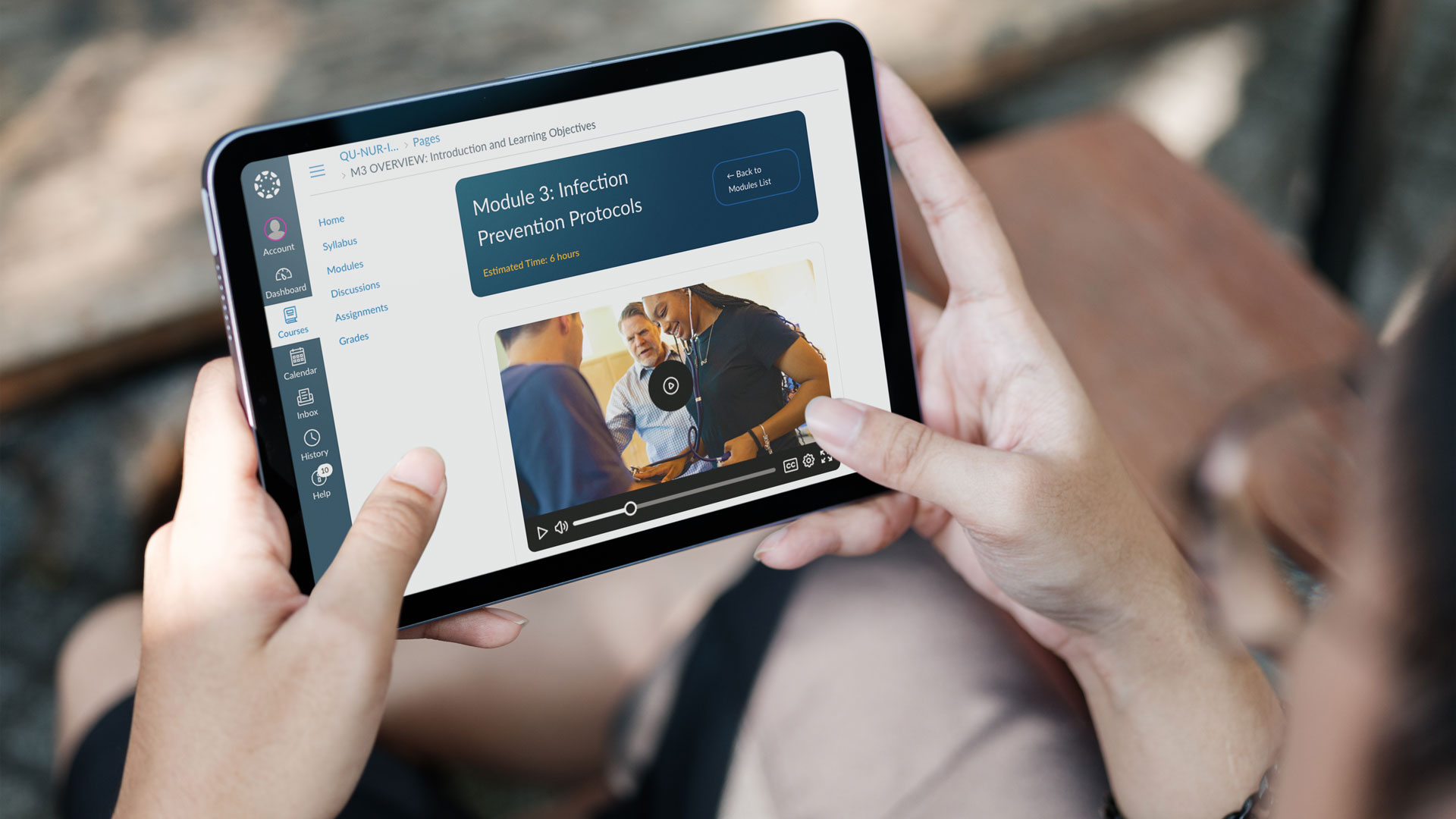
As part of a Learning Designer interview challenge, this project demonstrated the rapid development of a standardized course template for Quinnipiac University’s School of Nursing. Built in Canvas, the one-week Infection Prevention Protocols module follows CDC/WHO guidelines, Universal Design for Learning (UDL) principles, and Google Material 3 design to ensure accessibility and scalability. I designed the course template in Figma and used AI tools like ChatGPT and Claude to streamline content development. Stakeholders praised its clarity, usability, and adaptability, highlighting its ease of modification for future use. This project showcases AI-driven instructional design and scalable course development in higher education.
1 Week
Canvas
Higher Education Students
Blended/Hybrid Learning, Self-Paced eLearning
Accessibility Compliance, eLearning Development, Graphic Design, Interface Design, Project Management, User Experience Design, Web Design
Accessibility Guidelines, Modular Course Structure, Branding Templates, Learner Personas, Interview Summaries or Affinity Diagrams, Stakeholder Presentation, Final Course Prototype
Quinnipiac University’s School of Nursing is restructuring its curriculum to improve instructional design, standardize courses, and integrate active learning strategies. As part of this transition, the university is adopting Canvas, requiring a scalable approach to course development.
This instructional design challenge focused on creating a one-week online module on Infection Prevention Protocols for undergraduate nursing students. The module needed to align with nursing competencies, incorporate best practices in online learning, and ensure accessibility and inclusion.
Practical, hands-on learning through simulation labs and clinical practice.
Collaborative learning via study groups and peer discussions.
Diverse content formats like videos, interactive exercises, and case studies.
Structured, clear instruction with defined learning objectives.
Structured modular approach with clear learning pathways and objectives.
Integration of multimedia content including video demonstrations and interactive materials.
Evidence-based content sourced from CDC and WHO guidelines.
Built-in peer learning and collaborative discussion components.
Comprehensive assessment strategy combining practical skills and knowledge checks.
Blend of theoretical and practical learning materials.
Multi-format content delivery (text, video, interactive scenarios).
Integration of real-world case studies and scenarios.
Sequential skill building from foundational concepts to practical application.
Structured peer review and feedback mechanisms.
Structured library of authoritative guidelines and video demonstrations providing step-by-step guidance for infection prevention techniques.
Performance-based video assignments and flexible competency quizzes with multiple attempts, featuring detailed rubrics and immediate feedback.
Module Overview: Introduction and learning objectives, establishing module scope and expectations for infection prevention protocols.
Learning Resources: Core content delivery through readings, videos, and interactive materials.
Discussion Activities: Analysis and application of infection prevention concepts in real-world scenarios.
Skill Demonstration: Video-based demonstration of infection prevention techniques with peer review.
Competency Assessment: Final module quiz to verify understanding and achievement of learning objectives.
Comprehensive CDC and WHO guidelines covering standard and transmission-based precautions, hand hygiene protocols, and PPE procedures with visual guides and checklists.
Instructional videos and interactive modules featuring WHO demonstrations, Mount Sinai training content, and CDC Project Firstline scenarios for practical skill development.
Developed a standardized Canvas module following CDC/WHO protocols, integrating curated multimedia content with active learning strategies.
Created the visual design system in Figma using Google Material 3 guidelines, then custom-coded the Canvas template with HTML/CSS to ensure consistent styling across all course elements.
Built a comprehensive structure featuring automated assessments, peer collaboration tools, and clear learning pathways.
Conducted thorough accessibility testing to ensure WCAG compliance and universal design principles.
Performed comprehensive module walkthroughs and gathered detailed feedback from faculty and instructional design teams to validate the course template’s effectiveness.
Video demonstrations and case studies evaluating clinical skills application.
Module quizzes measuring infection prevention knowledge.
Peer evaluations and discussions analyzing prevention protocols.
Confirmed module meets nursing competencies and educational best practices.
Demonstrated effective use of Canvas tools to support diverse learning approaches.
Validated accessible, engaging learning experience for large-scale implementation.
reduction in course development timeline through strategic use of AI tools and template standardization.
sections supported with auto-graded assignments and optimized SpeedGrader rubrics.
Higher Education
Higher Education